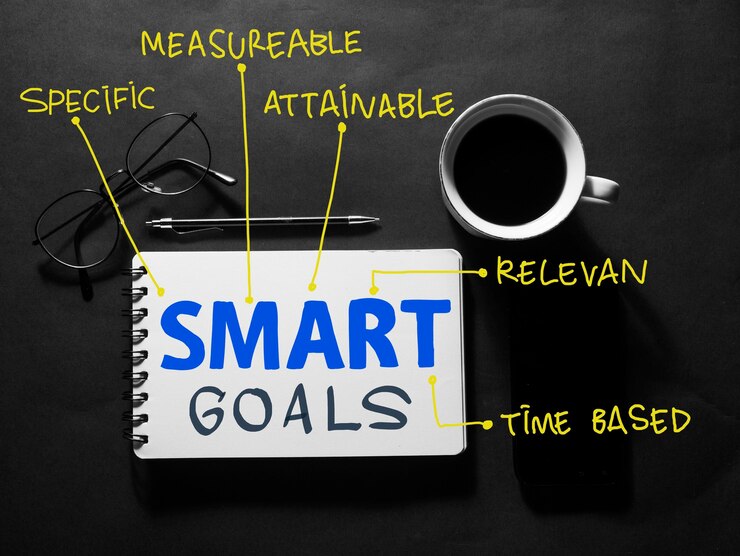25 Nov 2024 |
By - Sudha Mariappan

Did you know that 94% of marketers swear personalization is the key to boosting sales?
According to hubspot, the companies that are top of the game deliver customized content, targeted offers and personalized experiences.
2024 isn’t the year of AI and automation but mastering the art of making every customer feel like they’re your only customer.
So if you’re still using the same old marketing tactics, you’re in for a huge loss. As we update our phones to the latest versions when new software emerges, in the same way as marketers we need to have a digital transformation roadmap.
So what’s a digital transformation roadmap?
A digital transformation roadmap isn't just a plan; it's a strategic guide for navigating you through the complex journey of adding digital technology into every area of your business.
At this stage we cannot even live without our smartphones, so we may very well use this roadmap, where digital tools are key to fostering collaboration and idea-sharing.
You need to think twice if you think having a website and social media would work. Nowadays, digital marketing is way more complicated than it might seem. In the online world full of competitors, it is quite hard to make your brand stand out and gain new clients.
Every single person on this planet has different preferences about anything. With digitally efficient products and services becoming the forefront, marketing without personalization becomes irrelevant.
According to the "State of the Connected Customer" report from Salesforce, 79% of Indian consumers expect companies to always offer personalized offers.
Customers demand answers. They now expect relevance and personalization of their experience. Anything less than that can be considered mediocre, even with brilliant marketing.
Now let’s see how a digital transformation roadmap works in three separate phases.
Phase 1: Setting SMART Goals and Objectives

The backbone of any digital marketing roadmap is clearly defined goals and objectives that have to be SMART -specific, measurable, achievable, relevant, and time-bound in nature.
It is not just a formality but a stepping stone to all your marketing activities.
The SMART goal allows a clear-cut methodology of planning, implementing, and reviewing or assessing your marketing activities.
A study by CoSchedule reports that those marketers who set goals are 377% more likely to report success than those who don't. This is because SMART goals bring the following on board:
The creation of focus: They bring your marketing efforts to focus on specific areas that need attention, and that's why all action taken is purposeful.
Measurement Enabler: They give specific indications of success on which one can easily measure progress and change the strategies being put in place.
Accountability Driver: With deadlines and milestones indicated, SMART goals make sure that teams are accountable for their performance.
What is a SMART goal?
Now let's break this down into smaller parts:
- Specific: Your goals should always be specific and clear. Instead of having a goal to "increase sales," for example, you can make sure you state, "Increase online sales through SEO and social media marketing by 20% in the next six months."
- Measureable: Likewise, your goals should include some measurable criteria. You can use website traffic, conversion rates, or social media engagement as direct metrics for performance monitoring.
- Achievable: Your goals must be achievable regarding resources, time, and market. Study your past performances to estimate the real targets realistically.
- Relevant: Your goals must be in line with general business goals. You need to create your brand in such a way people will feel personal and relevant enough to stay in touch for a long time. Digital marketing in this case should help with that. For example, creating video content about daily activities or problems that people normally go through on a daily basis with your brand will be the ultimate relevancy.
- Time-Bound: Giving your goals a deadline will instill a sense of urgency and drive your team to achieve goals within a particular time frame.
Here's an example of Effective SMART Goals for Digital Marketing to show you just how effective they can be:
Increase Website Traffic by 30% Over Six Months: Drive highly qualified traffic to your site through content marketing, SEO, and social media campaigns.
Increase Conversion Rate by 15% in Three Months: This would include the optimisation of landing pages for value propositions and running A/B tests to make sure the highest percentage of website visitors become customers.
Increase Social Media Followers by 25% in Four Months: Improve brand awareness and social media engagement through regular posting, creation of targeted ads, and leveraging influencer campaigns.
It also helps to make sure your efforts are toward the core business objectives.
This is why aligning your marketing goals with your business's overall objectives is important. For example, if a company is going to release a new product, then the strategy of the marketer should be focused on creating awareness, capturing leads, and driving sales related to the product.
It is also important to note that companies that have this goal have higher revenue growth.
Therefore, regularly revisit and adjust your goals so they keep up with the change in priorities of the business and market conditions.
Read Also: 5 ways to take control of your small business using effective Content Marketing
Phase 2: Strategies and Tactics to Achieve Your Goals:

The moment you have SMART goals, you should spell out the various strategies and tactics that are going to help in achieving such goals.
At this stage, you are going to have to choose the appropriate channel of digital marketing and use tactics that ensure the proper engagement of your audience.
This shows how important it is to have a proper digital channel to run a successful business.
Some of the key channels to consider:
Social Media Marketing: Social media is an absolutely necessary tool for your business growth. With people swarming all over social media, you can use different social media platforms to reach your audience directly through Facebook, Instagram, LinkedIn, and other popular sites.
HubSpot's 2024 Marketing Strategy Report says that 43% of marketers use social media, 33% of them use email marketing and 32% use websites/blogs as their digital channels.
Posting interesting content with regards to the latest "Gen Z", or still being relatable with the nostalgic "millennials" will get you that roar of engagement. As 64% of Gen Z’s use social media along with 59% of Millennials and 47% of Gen X, they have confirmed discovering a product from social media, as reported on the same study.
Content Marketing: Marketers are those who understand their consumers' concerns on a personal level. With that being said, creating high-quality, informational content addressing the pain points of your target audience directly will definitely establish your brand as an industry thought leader.
The content might include regular blogs, eBooks, webinars, or videos.
Email Marketing: Email marketing is one of the most effective ways to convert leads into sales. But segmentation of your email lists is not only necessary but crucial. You need to create your lists according to where your email subscribers stand, create personalized campaigns, and watch engagement grow through the roof.
Search Engine Optimization (SEO) and Search Engine Marketing (SEM): The website that your brand has should be compatible and user-friendly. When your target audience searches for a particular product related to your brand, your website should pop up. In that way, more people will visit your website, thereby increasing website traffic and with your success growth.
SEO and SEM plays a crucial role in your website.
To know more about search engine optimization and search engine marketing, I have linked the sources from our other blogs for a better understanding.
Tools such as Google Trends, Keywordtool.io, Google Ads Keyword Planner, and SEMrush can help you track your search engine results and paid advertising.
Also, create a content strategy that'll engage your audience.
Creating content is as critical as we breathe, as it lies at the heart of any digital marketing strategy. A well-structured content strategy will help you acquire, engage, and convert your target audience.
A study by nDash states 70% of B2C marketers are actively investing in content marketing, while 73% of B2B marketers report increased engagement due to the same.
For creating well-structured content, you need to note the following:
Know your audience's pain points: Using customer feedback, social listening tools, and analytics will let you know the audience's needs, challenges, and interests.
For example, if your target audience lies in between 18 and 40 year-old women for a clothing brand you know, the pain point here might be some women having difficulty finding clothes from your brand because their size wouldn't be available.
You'll notice an immediate increase in sales if you catch the pain point and work towards solving it.
Create value with content: Create content that will provide value to the audience, whether it's teaching them something through a blog post, how to do it through a video, or showing the benefits of your product through case studies.
Segmenting your audience comes into play here, as different audiences have diverse preferences. So make sure to personalize your content according to that. It's important to create a mix of content types for blogs, videos, podcasts, infographics, as well as interactive content.
SEO Optimization: Optimise your content with proper meta descriptions, internal linking, and using keywords appropriately. This will not only improve the view and reach of your content but also put you at the top of Google's algorithm.
It takes special tactics to engage your audience by hooking them and helping them engage more with the brand. According to a study done by Gartner, as stated in support logic, companies that focus on personalized engagement are 16% more capable of retaining customers.
Personalization: Big data analytics are used to customize the message according to customer behaviour, preference, and purchase history, as it will be able to give a better engagement rate.
Influencer Marketing: In this regard, you would need to seek the collaboration of influencers within your industry to promote the product or service that you offer. Influencer marketing allows you to build credibility while tapping new market segments.
Retargeting Ads: This will help to run ads for the visitors who have visited your site but have never converted. These ads serve as a reminder and might probably drive conversions.
Read Also: Understanding Social Media and Social Media Marketing.
Phase 2: Defining Metrics to Measure Success:

Why do we define metrics?
Measuring success is not a one-time activity; there must be continuous monitoring and adjustment for top-notch performance on the part of your digital marketing strategy.
Companies that regularly review their digital marketing performance are most likely to exceed their business goals.
Here's how to maintain an effective review and adjustment process:
Monthly Performance Reviews: Run month-on-month reviews of your key performance indicators to analyze the effectiveness of your strategies. This will also help you to find out the trend, discover further opportunities for improvement, and make amends in tactics in real time.
Quarter Strategy Assessments: Every quarter, go deep into your marketing performance data. Assess whether your strategies are on par with your business goals; any discrepancy, reshape and get back on track.
A/B Testing: Perform regular A/B testing on every possible thing, from email subjects to button calls-to-actions and landing page designs, to determine the best choice to continually optimize your campaign.
Adapt to Changes in the Market: Digital marketing is dynamic, trends or technologies keep on evolving rapidly.
You need to keep your finger on the pulse of what's happening around you in the industry. This is important as digital marketing is evolving rapidly, it is dynamic. Therefore, adapt your strategies accordingly for the latest developments.
According to Deloitte, companies that move quickly to adapt to changes in their markets are 30 percent more likely than other companies to have higher revenue and profitability compared with competitors.
Read Also: Basics of On-Page SEO: Simple Steps to Follow to Increase Visibility (Free Checklist Included)
Now let's see a few best practices that will help in the success of your digital marketing roadmap:
1. Customer-Centric Approach:
Placing the customer at the heart of your marketing strategy. Understand their needs, preferences, and behaviors, and mold your marketing activities in that direction. As a matter of fact, in a study by PwC, 73 percent of consumers said that customer experience is a reason to choose one brand over another. Here's how you create a customer-centric digital marketing strategy.
Segment Your Audience: Divide your audience into distinct demographics, behaviors, and preferences. This way, you will be able to create messages that are really closer and more relevant to them.
Data-Driven Decision Making: Leverage analytics to build an understanding of customer behavior and preference. Google Analytics, HubSpot, and Salesforce do give you deep data on interaction and behaviors of customers that will lead you toward making informed marketing decisions.
2. Focus on Personalization:
Personalization means much more than putting the customer's name in an email. It involves offering content and experiences relevant to the individual's needs and preference.
According to Statista, in 2024 mobile commerce sales will amount to $3.56 trillion. This is the sign that you should invest in mobile optimization if you own a business.
Responsive Design: One should ensure that the website is responsive and mobile-friendly, easily adapting to different screen sizes, including consistency in user experience across devices. This means making sure your content is shorter, information is in bullet points, and content visuals are appealing and catch users' attention while on small screens.
Fast Loading: The loading speed of a website is considered critical for any mobile users. Google records that 53% of mobile visitors leave the site if it takes more than three seconds to load. This shows that the website's loading speed is improved by compressing images, minimizing code, and enabling browser caching.
3. Invest in Video Marketing:
Video marketing is one of the best ways to engage your audience and drive sales.
Create Engaging Video Content: Produce videos that capture the attention of your audience and add value. These may include product demos, customer testimonials, and explainers.
SEO Optimization: Since you want to make sure many people get to view your video content, make sure it's optimized for search engines by embedding keywords throughout the title, description, and tags of the video. You can share your videos on platforms like YouTube, which is the second-largest search engine in the world.
Use Live Video: One of the most powerful ways to interact with your audience live is by leveraging live streaming. Facebook claims that live videos receive six times more interactions compared to regular videos. So host Q&A sessions, product launches, and events virtually through this format.
4. Utilize Marketing Automation Tools
Marketing automation can greatly increase the effectiveness and efficiencies of your digital marketing. According to a report by HubSpot, 68% of businesses use some form of automation, and companies using automation see a 14.5% boost in sales productivity. Here you can check the top 10 marketing automation tools for your business.
Here's how it should be done:
-
Automate Repetitive Tasks: Use the automation tool for the most repetitive and exhausting tasks—email marketing, social media posting, lead nurturing—so your team can spend time on more strategic activities.
-
Create Automated Workflows: Establish automated workflows that will help in lead nurturing throughout the buyer's journey. For example, follow-up emails can be sent with automated personalized content, and they can be guided toward conversion.
-
Tracking Performance and Analysis: Most marketing automation tools are equipped with robust analytics capabilities through which you can track performance for your campaigns and make decisions based on the insights derived from the data.
This is how you can stay current with digital marketing trends. The key to a successful digital marketing strategy is continuous learning, adaptation, and optimization.
Now, it’s your turn to put this roadmap into action.
Connect with us to assess your organization’s health and create a perfect digital marketing roadmap at info@ontogendigital.com. Subscribe to us for more blogs.
KEY TAKEAWAYS:
- Personalization is crucial to enhancing customer experiences and driving sales in digital marketing.
- A digital transformation roadmap guides businesses through adopting digital technologies across operations.
- Setting SMART goals ensures focused, measurable, and time-bound digital marketing efforts for success.
- Multi-channel strategies, including social media, content, email, and SEO, are vital for engaging audiences.
- Regularly reviewing metrics and adapting to market changes are key to sustaining digital marketing success.